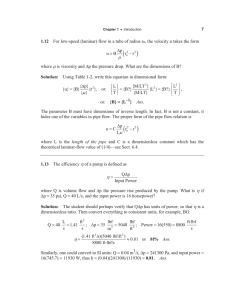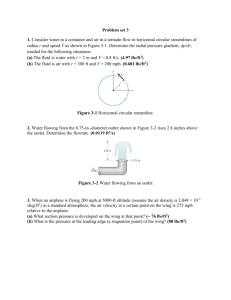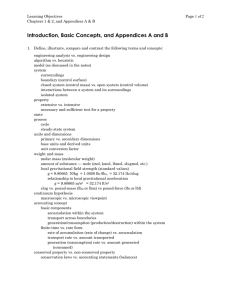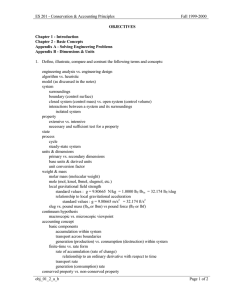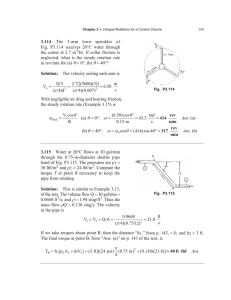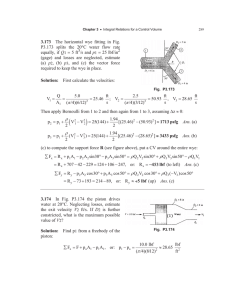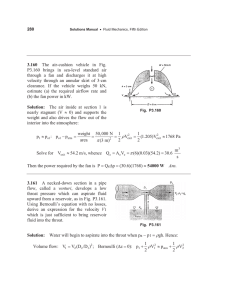1 1.7 A person whose mass is 150 lb weights 144.4 lbf. Determine (a
advertisement
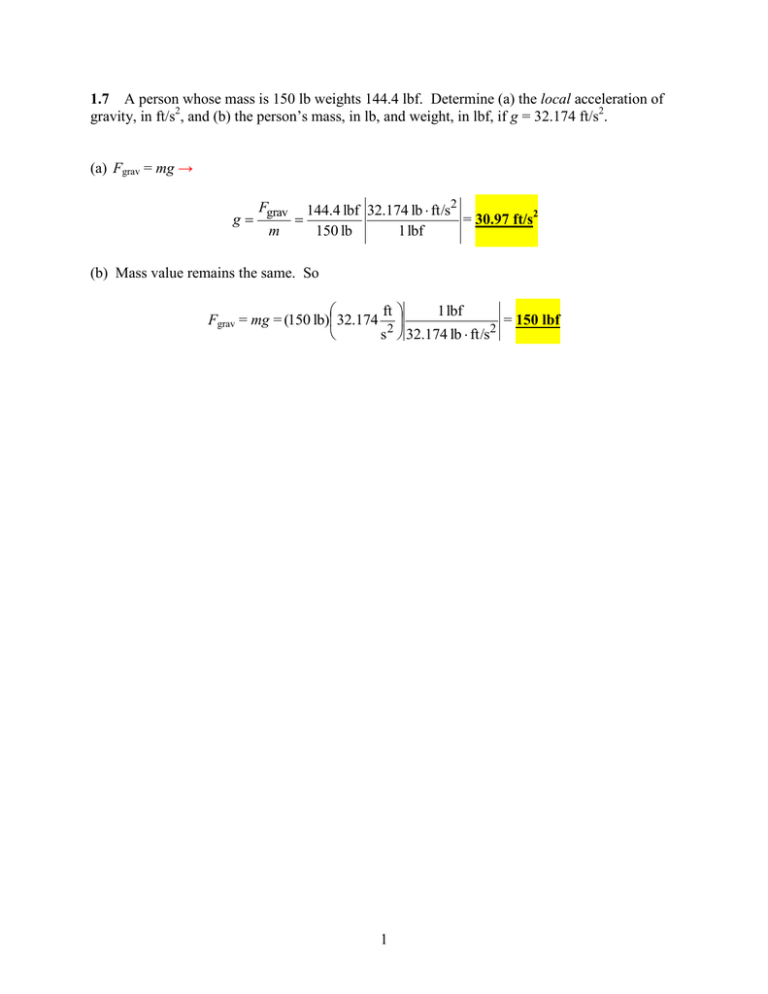
1.7 A person whose mass is 150 lb weights 144.4 lbf. Determine (a) the local acceleration of gravity, in ft/s2, and (b) the person’s mass, in lb, and weight, in lbf, if g = 32.174 ft/s2. (a) Fgrav = mg → g Fgrav m 144.4 lbf 32.174 lb ft/s2 = 30.97 ft/s2 150 lb 1 lbf (b) Mass value remains the same. So ft 1 lbf Fgrav = mg = (150 lb) 32.174 2 = 150 lbf s 32.174 lb ft/s2 1 1.11 At the grocery store you place a pumpkin with a mass of 12.5 lb on the produce spring scale. The spring in the scale operates such that for each 4.7 lbf applied, the spring elongates one inch. If local acceleration of gravity is 32.2 ft/s2, what distance, in inches, did the spring elongate? KNOWN: Pumpkin placed on a spring scale causes the spring to elongate. FIND: Distance spring elongated, in inches. SCHEMATIC AND GIVEN DATA: m = 12.5 m x ENGINEERING MODEL: 1. Spring constant is 4.7 lbf/in. 2. Local acceleration of gravity is 32.2 ft/s2. ANALYSIS: The force applied to the spring to cause it to elongate can be expressed as the spring constant, k, times the elongation, x. F = kx The applied force is due to the weight of the pumpkin, which can be expressed as the mass (m) of the pumpkin times acceleration of gravity, (g). F = Weight = mg = kx Solving for elongation, x, substituting values for pumpkin mass, acceleration of gravity, and spring constant, and applying the appropriate conversion factor yield x mg k 12.5 lb 32.2 ft2 lbf 4.7 in. s 1 lbf = 2.66 in. lb ft 32.174 2 s 1.21 A 2-lb sample of an unknown liquid occupies a volume of 62.6 in.3 For the liquid determine (a) the specific volume, in ft3/lb, and (b) the density, in lb/ft3. KNOWN: Volume and mass of an unknown liquid sample. FIND: Determine (a) the specific volume, in ft3/lb, and (b) the density, in lb/ft3. SCHEMATIC AND GIVEN DATA: m = 2 lb V = 62.6 in.3 ENGINEERING MODEL: 1. The liquid can be treated as continuous. ANALYSIS: (a) The specific volume is volume per unit mass and can be determined from the total volume and the mass of the liquid v V 62.6 in.3 1 ft 3 = 0.0181 ft3/lb m 2 lb 1728 in.3 (b) Density is the reciprocal of specific volume. Thus, 1 v 1 3 0.0181 ft lb = 55.2 lb/ft3
